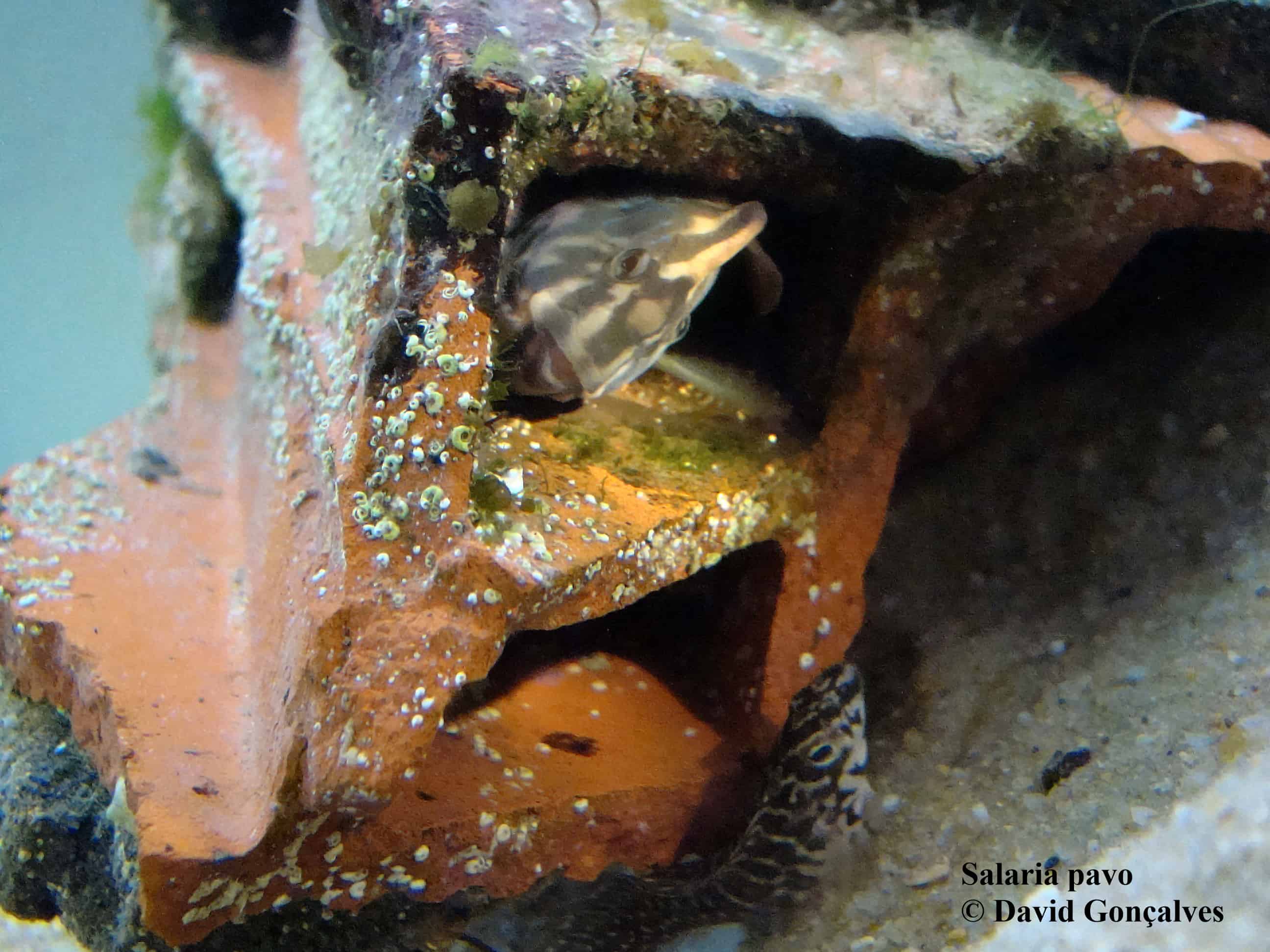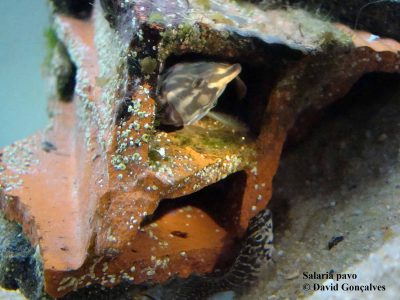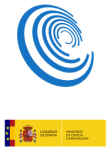Blast2GO Supported Project.
Researchers:
- MSc Sara D. Cardoso, Ph.D. candidate at Gulbenkian Institute for Science (IGC), Oeiras, Portugal
- Supervisors: Prof. Rui F. Oliveira, Gulbenkian Institute for Science (IGC), Oeiras, Portugal and Prof. Adelino V. M. Canário, CCMAR – Centre of Marine Sciences, University of Algarve, Faro, Portugal
Background and Project Overview:
The peacock blenny Salaria pavo (family Blenniidae) is a small intertidal fish usually found in rocky shores of the Mediterranean Sea and adjacent Atlantic areas. Populations of the peacock blenny under divergent ecological conditions (i.e. nest site availability) exhibit profound differences in their mating system, involving sex role reversal in courtship behaviour and the expression of sequential alternative reproductive tactics (ARTs).
Several neuroendocrine correlates of the interpopulational plasticity in the behaviour of females and nest-holder males and of the expression of male ARTs have been identified. In this study, using RNA-seq, we focus on how the same genome may give rise to distinct social phenotypes according to environmental cues at an inter-individual level by studying both females and nest-holders from populations with reversed sex roles and from populations with ‘conventional’ sex roles to uncover the genes and genetic pathways underlying this plasticity in courtship behaviour.

Salaria pavo nest-holder male inside its nest being courted by a female.
Future Perspectives/Outlook:
This species offers the potential to investigate the genomic mechanisms underlying evolutionary changes in behavioural plasticity. Therefore the reference transcriptome obtained in this study will be key to develop genetic tools for future studies, such as genome editing to test the role of specific candidate genes in the control of courtship roles.
Contribution of Blast2GO:
Blast2GO will mainly contribute to the functional annotation of the transcriptome and functional analyses. The different tools available in Blast2GO makes it ideal to annotate de novo transcriptomes for species without a reference genome or a genome from closely related species. Taking advantage of Blast2GO PRO tools, versatility and speed in this project, we intend to obtain high-quality functional annotations and assess the coding potential for all transcripts assembled de novo, therefore acquiring a reference transcriptome for the species, and to characterize each set of differentially expressed genes by doing functional analyses, such as gene ontology (GO) enrichment and KEGG pathway analyses.
Instituto Gulbenkian de Ciência:
Instituto Gulbenkian de Ciência (IGC) is a private institute devoted to basic biological and biomedical research, and to graduate training. The IGC was set up by the Calouste Gulbenkian Foundation in 1961 and is free from hierarchical structure, with small independent research groups working in an environment designed to foster interaction and cooperation. The direct governance of the Institute is made through the Director, a Deputy Director with primary responsibility for financial administration, and a Deputy Director for Science.
Photo caption – Salaria pavo nest-holder male inside its nest being courted by a female.



